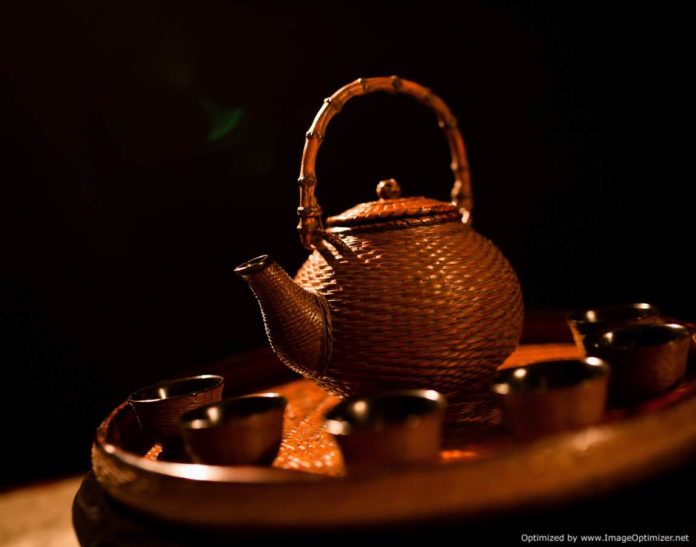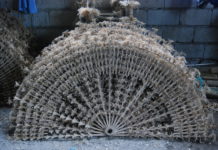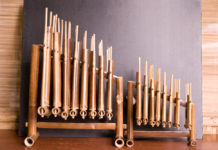Basket lacquerware is the product combining both bamboo and lacquer crafts. It first starts with batten body made from bamboo weaving. Then, the artisan coats the surface with layers of raw lacquer, or ki-urushi in Japanese, and putty. Thus, the final product not only has the feel and pattern that is characteristic of bamboo weaving, but also retains the anticorrosive quality of lacquerware.
 Basket lacquerware is a hybrid and highly-skilled craft. Compared with the bamboo-woven counterpart (without external coating), it is elegant and is more versatile. Traditionally, lacquerware was made from wooden body. Later, other materials have become widely in use. Namely, cloth, leather, ceramics and bamboo batten.
Basket lacquerware is a hybrid and highly-skilled craft. Compared with the bamboo-woven counterpart (without external coating), it is elegant and is more versatile. Traditionally, lacquerware was made from wooden body. Later, other materials have become widely in use. Namely, cloth, leather, ceramics and bamboo batten.
The bamboo batten body, or basket body, uses the woven objects made from bamboo batten. There are a series of steps in the making of the basket lacquerware. It usually starts with selecting the bamboo, peeling, half-splitting, thinning, same-width trimming and thinning. The steps are to make sure bamboo battens are ready for the following procedures.
The weaving commences after bamboo battens are ready. The bamboo weaving techniques vary from person to person. It usually starts with bottom-weaving, then side-weaving, body-weaving, closing of the opening, handle-making and foot-making. The primitive basket body at this stage is finally ready for use.
When it comes to painting on the basket body, it usually includes a series of procedures. First of all, the artisan usually starts by sanding the surface on which is painted a layer of raw lacquer. Then, on the coated surface, the artisan fills in putty and smooths the whole work once again. After that, a piece of cloth is glued on top, then grinding, three layers of lacquer coating are applied, and then re-grinding. Finally, there is wiping and polishing.
Crafts Achievement Award winner of 2013, Li Jung-lieh, is the master of the basket lacquerware in Taiwan. Li Jung-lieh joined Nantou County Handicraft Research Class when he was 18 years of age. He studied the bamboo weaving with Master Huang Tu-shan. At the class, Li was inspired by the principal, Yen Shui-long, who was a renowned artist himself. After that, Li also learned the lacquer skill from Master Chen Huo-quing. Li Jung-lieh started to combine the bamboo weaving and the lacquer crafts, beginning to create unique basket lacquerware.
In creative process, Li Jung-lieh believes he must strive to give the final product “practical, beautiful and resilient” values. He is creative in the sense that he is not bound by traditions. Instead, Li Jung-lieh extends the basket lacquerware to tea sets and furniture. The crafts award winner is innovative both in techniques and in the form-making. His works of art are in museum collections both in Taiwan and abroad. In the Bamboo Cultural Museum of Zhushan, people can take a visit to see his works.





